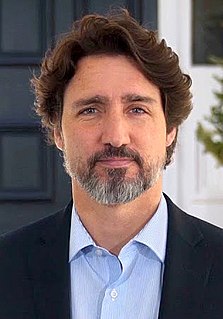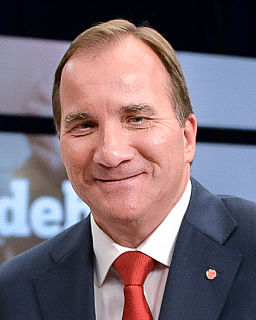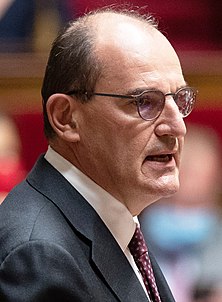This article does not cite any sources .(March 2015) (Learn how and when to remove this template message) |
| |||||
| Decades: | |||||
|---|---|---|---|---|---|
| See also: | Other events of 1984 List of years in Laos | ||||
The following lists events that happened during 1984 in Laos .
This article does not cite any sources .(March 2015) (Learn how and when to remove this template message) |
| |||||
| Decades: | |||||
|---|---|---|---|---|---|
| See also: | Other events of 1984 List of years in Laos | ||||
The following lists events that happened during 1984 in Laos .
This section is empty.You can help by adding to it.(March 2015) |

A prime minister is the head of the cabinet and the leader of the ministers in the executive branch of government, often in a parliamentary or semi-presidential system. A prime minister is not the head of state of their respective state nor a monarch, rather they are the head of government, serving typically under a monarch in a hybrid of aristocratic and democratic government forms or a president in a republican form of government.

The prime minister of Australia is the head of government of Australia. The prime minister is the leader of the federal government and is also accountable to federal parliament under the principles of responsible government. The incumbent prime minister is Scott Morrison, who took office in August 2018 as leader of the Liberal Party.

The prime minister of Canada is the head of government, chair of the Cabinet, and primary minister of the Crown. Canadian prime ministers are styled as The Right Honourable, a privilege maintained for life.

The prime minister of the United Kingdom is the head of government of the United Kingdom. The prime minister directs both the executive and the legislature, and together with their Cabinet is accountable to the monarch, to Parliament, to their party, and ultimately to the electorate, for the government's policies and actions.

The prime minister of India is the leader of the executive of the Government of India. The prime minister is the chief adviser to the president of India and the head of the Union Council of Ministers. They can be a member of any of the two houses of the Parliament of India—the Lok Sabha and the Rajya Sabha ; but has to be a member of the political party or coalition, having a majority in the Lok Sabha.

The prime minister of Japan is the head of the government of Japan, the leader of the National Cabinet and the commander-in-chief of the Armed Forces of Japan; he is appointed by the emperor of Japan after being designated by the National Diet and must enjoy the confidence of the House of Representatives to remain in office. He is the head of the Cabinet and appoints and dismisses the other ministers of state. The literal translation of the Japanese name for the office is Minister for the Comprehensive Administration of the Cabinet.

The prime minister of Israel is the head of government and chief executive of Israel.
The head of government is either the highest or second highest official in the executive branch of a sovereign state, a federated state, or a self-governing colony, autonomous region, or other government who often presides over a cabinet, a group of ministers or secretaries who lead executive departments. "Head of government" is often differentiated from "head of state", as they may be separate positions, individuals, or roles depending on the country.

The prime minister of New Zealand is the head of government of New Zealand. The incumbent prime minister, Jacinda Ardern, leader of the New Zealand Labour Party, took office on 26 October 2017.

The Prime Minister is the head of government in Sweden. Before the creation of the office of a Prime Minister in 1876, Sweden did not have a head of government separate from its head of state, namely the King, in whom the executive authority was vested. Louis Gerhard De Geer, the architect behind the new bicameral Riksdag of 1866 that replaced the centuries-old Riksdag of the Estates, became the first officeholder in 1876.

The Prime Minister of Belgium or the Premier of Belgium is the head of the federal government of Belgium, and the most powerful person in Belgian politics.

The prime minister of the French Republic, sometimes shortened to premier, is the head of the executive of the government of France. The prime minister is the holder of the second highest office of France. During the Third and Fourth Republics, the head of government was formally called president of the Council of Ministers, generally shortened to president of the Council. However, the post was usually called "prime minister" or "premier" in non-French sources.

The Prime Minister of Denmark is the head of government in the Kingdom of Denmark comprising the three constituent countries: Denmark, Greenland and the Faroe Islands. Before the creation of the modern office, the kingdom did not initially have a head of government separate from its head of state, namely the monarch, in whom the executive authority was vested. The Constitution of 1849 established a constitutional monarchy by limiting the powers of the monarch and creating the office of premierminister. The inaugural holder of the office was Adam Wilhelm Moltke.

The Prime Minister of the Netherlands is the head of the executive branch of the Government of the Netherlands in his capacity as chair of the Council of Ministers. The Prime Minister is de facto the head of government of the Netherlands and coordinates its policy with his cabinet. The current Dutch Prime Minister is Mark Rutte, in office since 2010.

The prime minister of Russia, is the head of the Russian government, the chief executive of the Russian Cabinet and the second most powerful figure of the Russian Federation. The official residence of the prime minister is Gorki-9 in Odintsovsky District, Moscow Oblast, but his/her working residence is in Moscow. Under Article 24 of the Federal Constitutional Law 'On the Government of the Russian Federation', the prime minister "heads the Government of the Russian Federation".

The prime minister of Pakistan is the head of government of Pakistan and designated as the "Chief Executive of the Republic".

The prime minister of Malaysia is the head of government of Malaysia. The prime minister directs the executive branch of the federal government. The Yang di-Pertuan Agong appoints a member of Parliament (MP) who, in his opinion, is most likely to command the confidence of a majority of MPs, the prime minister, usually the leader of the party winning the most seats in a general election.
The Union Council of Ministers exercises executive authority in the Republic of India. It consists of senior ministers, called 'cabinet ministers', junior ministers, called 'ministers of state' and, rarely, deputy ministers. The council is led by the Prime Minister of India.

The Deputy Prime Minister of India is the deputy head of the Government of the Republic of India and the second highest ranking member of the Union Council of Ministers. A deputy prime minister usually also holds a cabinet portfolio such as the home minister, defence minister or finance minister. In the parliamentary system of government, the prime minister is treated as the "first among equals" in the cabinet; the position of deputy prime minister is used to bring political stability and strength within a coalition government or in times of national emergency, when a proper chain of command is necessary.
| This article related to the history of Laos or its predecessor states is a stub. You can help Wikipedia by expanding it. |
| This year in Asia article is a stub. You can help Wikipedia by expanding it. |